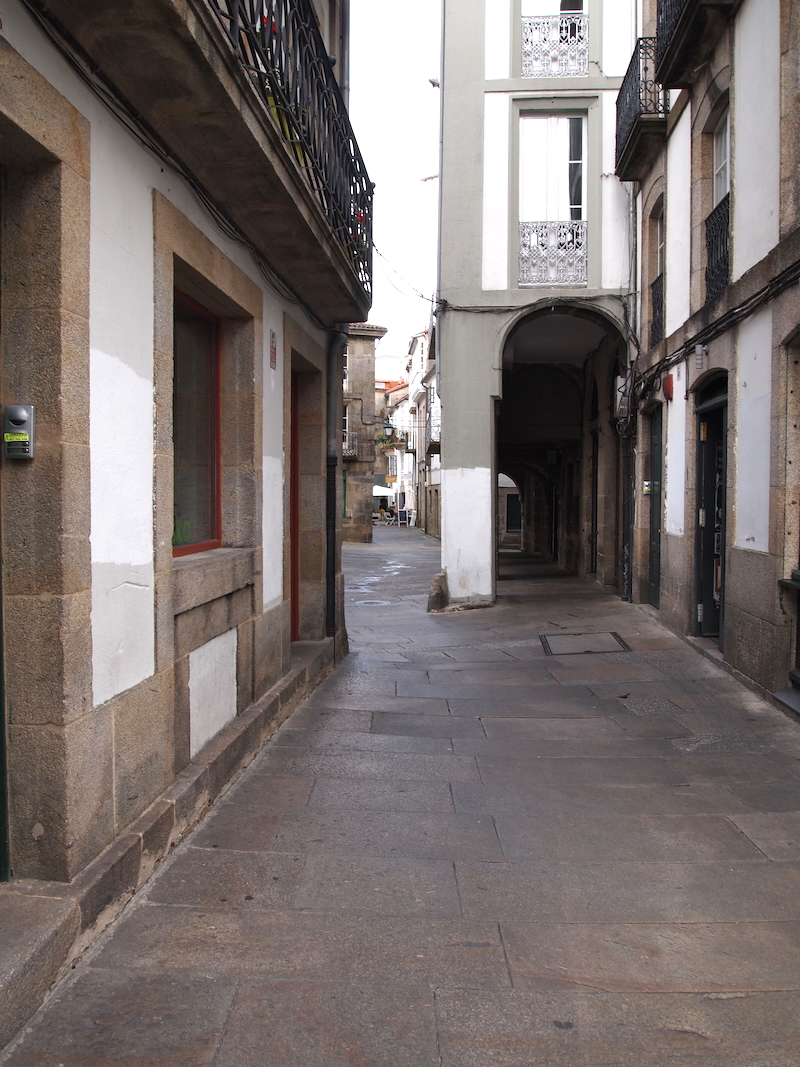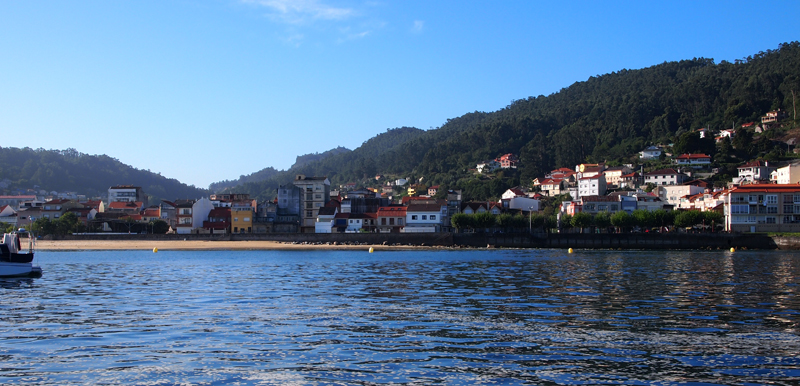In the end I stayed at anchor at Bueu for 3 nights. There were 3 other boats here, an interesting contrast in style. A big old wooden Norwegian Gaffer, a Halberg Rassy 50 all mod cons and power hungry, they were running the engine to power the machine washing, and Wyloe , these seem the boat of choice by a number of livaboards. Next day I inflated the dinghy rowed ashore and swam from the beach, it was lovely. Next day was a rainy morning and although it cleared by early afternoon I thought I’d stayed another day, whats the rush when you are in such beautiful places. It was a lovely bay backed by wooded hills scattered with houses climbing the hillsides, there were a number of beautiful beaches and behind the rest of the ria, always with these beautiful wooded hills. But then it was time to move on so I weighed anchor and set out for the Illas Cies.
There has been a low sort of stuck of the coast of Portugal for the last fortnight or so which has been giving us either no wind or persistent southerlies. Not so good when you are trying to go South. So after reaching out from the ria it was another beating to windward session again. It all started out so well but then where does this wind suddenly spring from, one minute a lovely 15 to 17 knots then its 20, 25, hold on a minute 30 plus- more sail shortening practise. I had wanted to anchor of the islands but it was far too windy and the sea too rough so decided to press on to Baiona, a shame for the islands, rocky and rugged look truly beautiful. Into the Enseadia de Baiona after rounding the Ilas Serralleiras and you wonder what the fuss was all about, a gentle breeze and flat sea. You feel a bit silly with 3 reefs still in the main. So I anchored in the bay along with a dozen or more yachts, obviously a popular spot.





